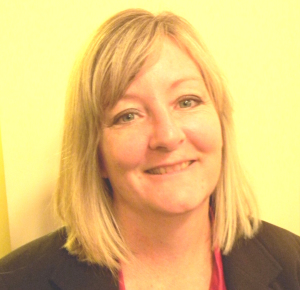❒ Finance chief: State will send more tax increase revenue sooner

FINANCE DIRECTOR Karin Schnaider said Thursday she misstated amounts and timing related to the city’s anticipated tax revenue.
File photo
During a multi-member staff report on anticipated revenues and expenditures related to the 1-percent sales tax increase voters approved Nov. 4, Schnaider responded to Councilmember Alan Schwartzman, who asked how soon the initial revenues would arrive after the tax hike goes into effect April 1.
“The revenues will begin in the last quarter of the fiscal year, but we don’t receive them till the first quarter of the following year,” the finance director said at the meeting. “And at that, they will also be keeping some of it.”
She said the state would keep “between 75 and 80 percent of your revenue, just in case revenues don’t hold at that pattern, so to get the full year’s worth of revenue will not occur till September of the following year.”
The city would get a “true-up” in September 2016, and the Finance Committee, delegated by the city as the oversight agency of Measure C income and spending, would give the city a report January 2017, Schnaider said Tuesday.
But she said Thursday she had gotten her numbers reversed.
“My words said that the state holds 80 percent of our sales tax until the annual true-up. That is backward of what I meant to say,” she said in an email to The Herald.
“The state sends us 80 percent of our sales tax, and the true-up of the other 20 percent occurs both quarterly and annually.
“The timing of remittance may be off slightly from when people pay at the register, but please be assured the city does receive all payments from the state,” Schnaider said.
“In addition, we have a sales tax auditor under contract that provides additional assurance of this. I apologize that I misstated my message.”
Of the anticipated $3.7 million expected from the tax increase for locally purchased and used items, $1.7 million would be used to maintain city services at the current level, which city employees have described as “keeping the lights on.”
The remainder is expected to be spent on needed infrastructure and improvements, including replacing the First Street promenade railing and police radios, repairing downtown shopping area sidewalks, replacing playground equipment and dispatch and records systems, developing plans and specifications for the Industrial Park Road project, buying a wildland fire engine, developing water management and flood mitigation plans, repairing and repaving damaged roads and making repairs at the James Lemos Aquatic Center.
The projects are expected to be done by the fall of 2017.






Leave a Reply